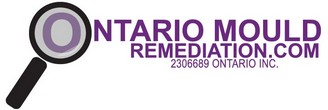How to stop mold growth
[divider] How to stop mold[/divider]
Control the moisture and you control the mold! The answer really is that simple. Moisture is a molds best friend. Although it is just one of four things that mold needs to thrive, it is the most important thing.
The real problem comes from correcting the source of the moisture. This could be caused by simple things like condensation build up in kitchens, bathrooms and laundry rooms or even by spilling a glass of water. More serious water buildup can come from things like plumbing leaks, unsealed doors or windows that build moisture or even foundation cracks. In any case, the water needs to be eliminated! Adequate ventilation plays a big role in this job.
Furthermore, mold needs food such as dust. Good housekeeping practices help to minimize this food source. Mould also uses the nutrients found in drywall, wood, wallpaper, ceiling tiles, carpet, fabric and paint, all of which commonly exist in a home or occupational work place.

 Before we get into how to kill mold, first we must give our professional disclaimer. Killing mold does not stop its risks, especialliy health related risks. The Mycotoxins that are present in the cell walls of mold will remain as potent whether dead or alive. Killing mold is thus just the start. Once dead, the mold needs to be properly removed.
Before we get into how to kill mold, first we must give our professional disclaimer. Killing mold does not stop its risks, especialliy health related risks. The Mycotoxins that are present in the cell walls of mold will remain as potent whether dead or alive. Killing mold is thus just the start. Once dead, the mold needs to be properly removed. As we mentioned earlier on our journey, mold is everywhere. It can be found on just about any surface, even in the air we breathe. Mold has been on this planet long before humans. You might think that we have developed a tolerance to it over time and you are right. Humans have learned to adapt to the presence of mold but we are free from its harmful effects. One of our best defense mechanisms when it comes to detecting the presence of mold is our noses.
As we mentioned earlier on our journey, mold is everywhere. It can be found on just about any surface, even in the air we breathe. Mold has been on this planet long before humans. You might think that we have developed a tolerance to it over time and you are right. Humans have learned to adapt to the presence of mold but we are free from its harmful effects. One of our best defense mechanisms when it comes to detecting the presence of mold is our noses.